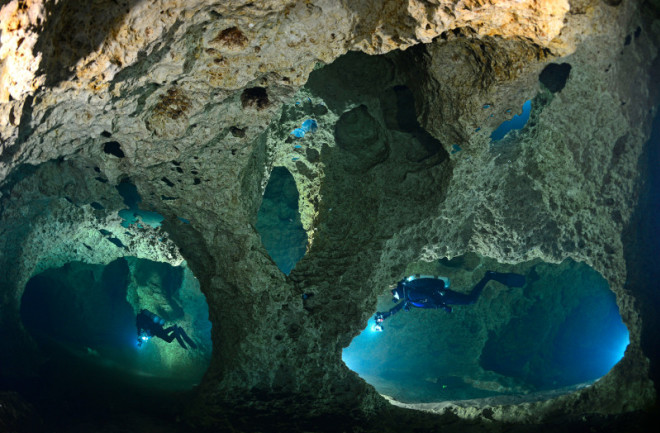About 20 miles south of Cancun, Mexico, on a stifling summer day, Tom Iliffe squints over a limestone ledge and into a giant pool of scuzzy, brown water. Despite the heat, he’s wearing a wet suit that covers everything but his blue eyes and white goatee. A spool of bright-orange nylon line and an assortment of mesh bags carrying glass test tubes, plastic caps and measuring devices dangle at his side. Below, the water temperature is roughly the same as the air. He jumps.
Searching for Life in Mexico's Underwater Caves
Marine biologist Tom Iliffe is on a quest to understand the halocline, a layer of water that may hold the secrets to Earth's earliest life.
Aug 11, 2014 12:00 AMDec 18, 2019 10:35 PM

Increased algal growth threatens attractions like Peacock Springs, whose caves are part of the longest underwater cave system in the country. (Credit: Mark Long)
Newsletter
Sign up for our email newsletter for the latest science news
0 free articles left
Want More? Get unlimited access for as low as $1.99/month
Stay Curious
Sign up for our weekly newsletter and unlock one more article for free.
View our Privacy Policy
Want more?
Keep reading for as low as $1.99!
Already a subscriber?
Find my Subscription
More From Discover
Stay Curious
Subscribe
To The Magazine
Save up to 40% off the cover price when you subscribe to Discover magazine.
Copyright © 2025 LabX Media Group
